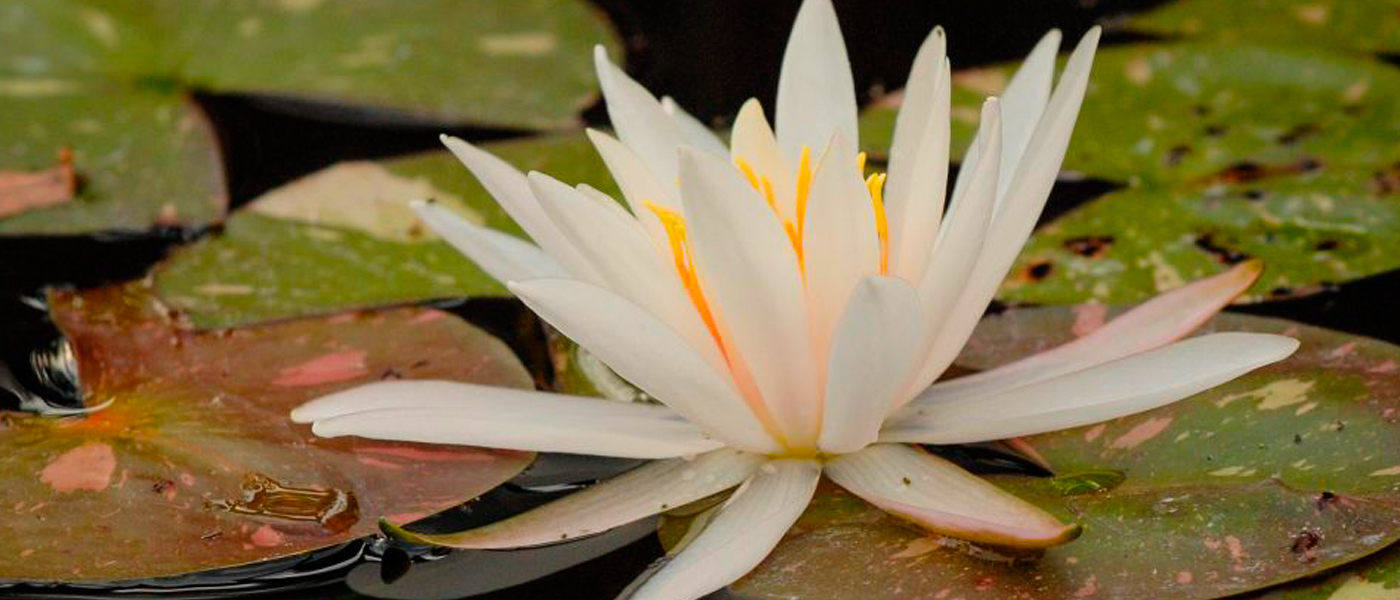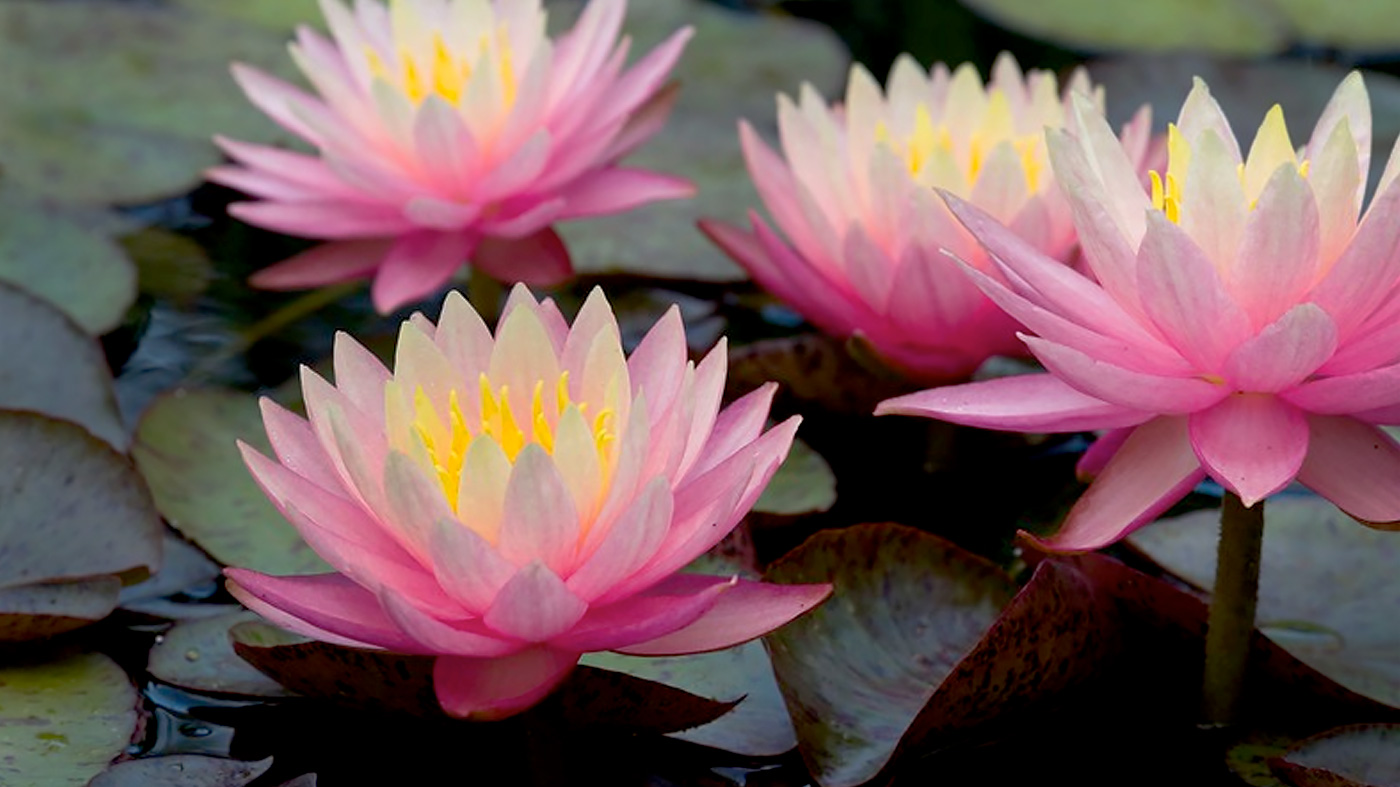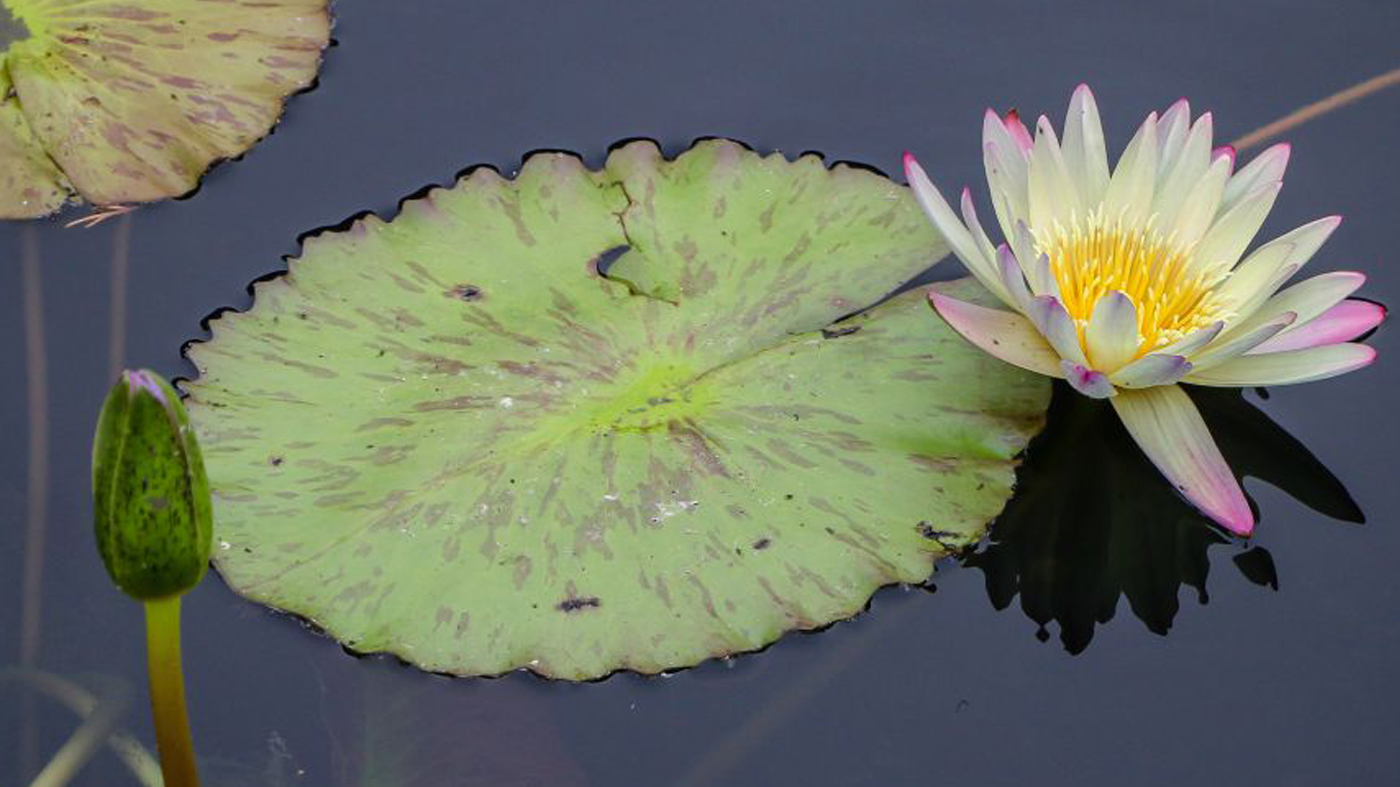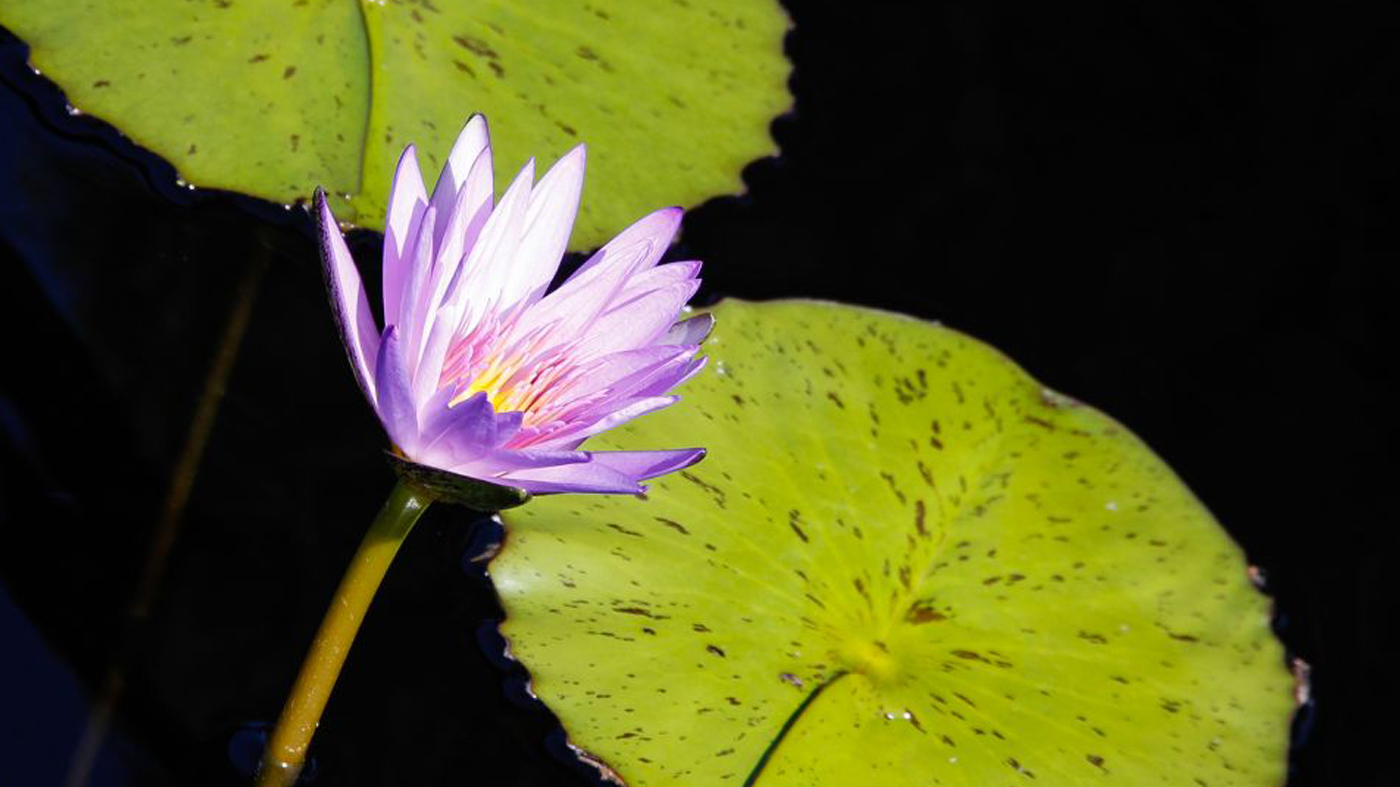In general, gardeners are game folks—always ready to grow a new seed, experiment with an unusual plant variety, or to give a fresh cutting a try.

What's often called a lily pad is actually a floating leaf: Nymphaea 'Arc-en-Ciel' is sometimes grown specifically for its beautifully mottled and variegated leaves.
Still, there are a few gardening ventures that can give pause to even experienced midwestern gardeners. This month in Smart Gardener, we dive into one of them: the watery world of waterlilies.
Nymphaea is the beautifully named genus for about half of all waterlily species. (The Nymphaeaceae family totals eight genera and about 70 species.) Waterlilies are aquatic floating-leaved plants, rather than submersed plants; the latter live fully underwater, while waterlilies are rooted in underwater rhizomes that send long, flexible stems (called petioles) up toward the light. They require full sun and relatively calm water so that their floating leaves can unfurl without ripping.
It doesn't take much to get a waterlily started, but before you begin, you'll need to consider a few questions.

We can stare at the gorgeous yellow/apricot/pink shadings of Nymphaea 'Sunfire' for hours.
Hardy or Tropical?
Waterlilies are divided into two groups: tropical and hardy, and the distinction is important for home gardeners.
Tropical waterlilies are too tender for our Zone 5 winters, but their vivid flower colors (including pink, blue, and sunset orange) and unusual leaf patterns make them the waterlilies of choice for many gardeners—who simply treat them like annuals, purchasing fresh rhizomes each year for their container gardens or water features. Our Heritage Garden pools are filled with tropicals.
"Hardy" refers to waterlilies (many are white and yellow) that can survive our winters if the rhizome is not allowed to freeze; in our area, ice can reach down 18 inches in small ponds, and even deeper in backyard water gardens. For gardeners who choose hardy over tropical, there is a caveat: many hardy waterlilies can become invasive. If your water garden has a chance of overflowing into another body of water (including during a flood), opt for tropicals instead.
Both tropical and hardy rhizomes can be overwintered. Our Plant Information Service team has a succinct summary of how-tos here: chicagobotanic.org/plantinfo/faq/overwintering_water_lilies.

Considered a medium-spread plant, Nymphaea 'Green Smoke' can cover 6 feet of space in a pond or pool. One leaf alone can measure a foot across.
Small, Medium, or Large?
There's a waterlily to fit every water garden: sizes range from pygmy (with flowers an inch across) to giant (flowers more than a foot across). The most important size to consider is the spread—these long-armed plants can reach out many feet in all directions. Online and catalog resources may group their offerings by small/medium/large spread (very helpful!), or list spread size along with flower and leaf measurements.
First, consider the size of your water garden. Is it a simple five- to seven-gallon pot? A good-sized fountain or pool? A small pond on your property? Start with one or two rhizomes of an appropriately sized waterlily to see how it grows in your garden's conditions. Resist the urge to overplant! Crowded plants don't get the nutrition they need and won't produce the flower show you're expecting.

One blooms by day, one blooms by night. Both Nymphaea 'Red Flare' and 'Blue Beauty' (shown here) are wonderfully fragrant.
Day-blooming or Night-blooming?
Depending on the pollinator (mainly beetles), waterlilies bloom either by day or by night—which is also when they release their amazing fragrances. (See the deliciously fragrant story of the giant waterlily in the genus Victoria in the sidebar.)
Planting a fragrant night garden? 'Red Flare' is a dark and dramatic night-bloomer. Crazy for blue flowers by day? 'Blue Beauty' is a tried-and-true variety (more than 100 years old!) still in demand for its lovely, sky blue color. Essentially, day vs. night is a personal choice. Our horticulturist's suggestion? Plant one of each.
A few more smart tips from our horticulturists:
All rhizomes need to be planted in soil, either in a pot (a shallow, wide container works well) or in the soil at the bottom of a water feature. Like spread, planting depth varies—follow the guidelines given for each cultivar.
Add ½ inch of small gravel to the top of the soil in the rhizome's pot once it's positioned underwater—it adds just enough weight to hold down the soil, preventing it from floating away and dirtying the water.
Waterlilies are heavy feeders. Fertilize them every two weeks through June/July/August by pushing water garden fertilizer pellets (available online or at nurseries) down into the soil around the rhizome.
To keep water clear and mosquito-free, overfill large containers with running water once per week—the overflow disrupts mosquito larvae that may have established on the surface.
The secret to the dramatic look of the Heritage Garden pools: black pond dye. Available online or at nurseries, it not only creates a classy, mirror-like surface, but also blocks sunlight, thereby reducing algae growth in your water garden.
Karen Zaworski is a garden writer and photographer who lives and gardens in Oak Park, Illinois.

